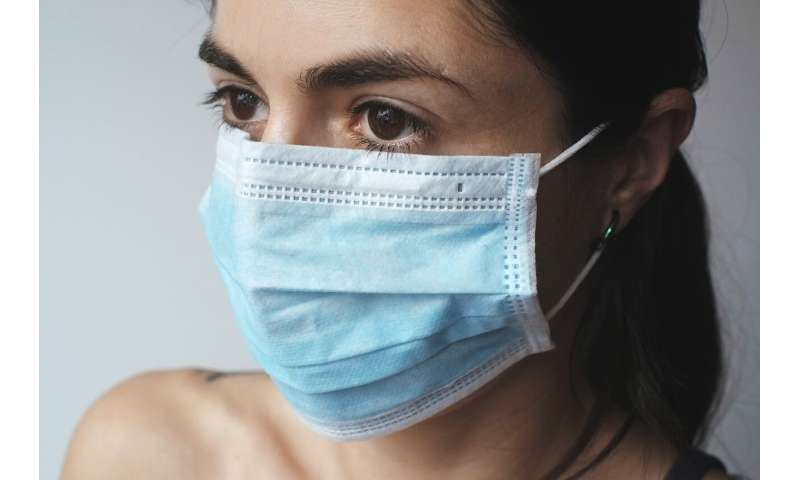
In certain situations where it is impossible to keep a distance of 1 meter from others, face masks are recommended as an additional measure to prevent infection from people with COVID-19 without symptoms when there is an increasing spread of infection.
“Distance is still the most important factor in preventing infection. Face masks do not replace other infection control measures,” stresses Line Vold at the Norwegian Institute of Public Health.
The latest systematic review from the Norwegian Institute of Public Health shows that distances of 1 meter or more reduce the risk of infection by an estimated 80 percent. Face masks used in the population only reduce the risk by approximately 40 percent.
“This means that the risk of infection can increase if we replace the recommendation for a distance of at least 1 meter with the use of face masks. It also shows the importance of people continuing to keep at least 1 meter distance to others than their closest contact, so that the virus does not spread,” says Vold.
May be necessary on public transport
With increasing transmission in society, the NIPH recommends that people should wear face masks on public transport when it is not possible to keep a distance of 1 meter from other passengers. A typical situation is during rush hour on public transport, especially in the bigger cities.
The Government has decided that from Monday 17th August and the following 14 days, it is recommended that travelers using public transport within, to and from Oslo and the residential and the work region of Indre Østfold (Indre Østfold, Rakkestad, Skiptvedt and Marker) should wear a face mask when 1 meter distance cannot be kept.
Not everyone can wear face masks, for medical and other reasons. We emphasize that regardless of the degree of transmission in society, the most important measure is to be able to keep at least 1 meter distance. Where this is not possible, the use of face masks can reduce the risk of transmission, but cannot replace social distance as a measure. Children under secondary school age are not recommended to wear face masks. Children under the age of two shall not wear a face mask.
In the current epidemiological situation, we recommend that Norway plans for an increased need for the use of face masks in society by ensuring accessibility, preparing information material and initiating measures to ensure safe disposal.
Face masks are not effective with low spread of infection
There is evidence that medical face masks can have a protective effect against the spread of respiratory tract infections in society, but the results from research vary greatly. The effect of face masks depends on, among other things, their filtration ability, correct use and the level of infection in society.
The main purpose of a face mask is to prevent contagious people without symptoms from infecting people who are at risk of infection because of underlying conditions or diseases. The effect of face masks in the general population depends on the spread of infection. With low infection levels, a face mask is not an effective infection control measure.
When the prevalence of COVID-19 in society is as low as it is now, many people would have to wear face masks for the measure to have any measurable effect. With 100 new cases of infection in Norway in one week, 200,000 people would have to wear face masks in society for one week to prevent one new case. If this increases to 1,000 cases in a week, only 20,000 people would have to wear a face mask for a week to prevent a new case.
This is referred to as the “numbers needed to mask” and shows how the effect of face masks increases with increased spread of infection.
Be tolerant
Not everyone can, or wants to, wear a face mask. These may include people with chronic respiratory diseases, people who interact with people with hearing difficulties, people with a mental disability, or children under 13 years of age. It is important that society understands and respects this.
Source: Read Full Article
